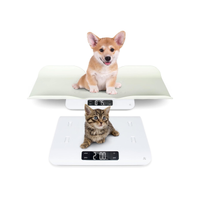Obesity in cats: Symptoms, prevention and how to help
Obesity in cats can lead to serious health conditions and a reduced lifespan – here’s what you need to know
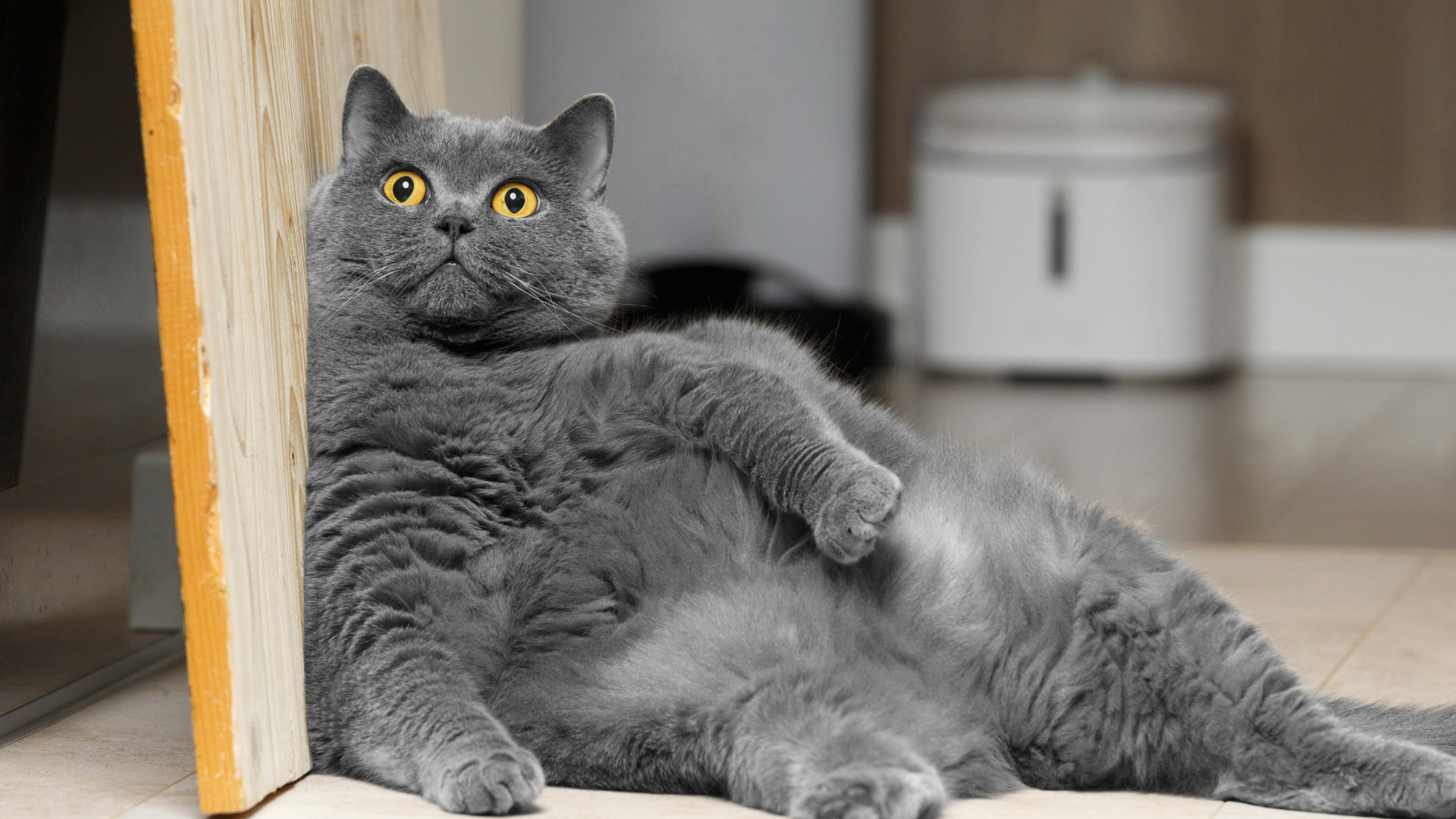
Obesity in cats can have major consequences on their health and quality of life and can result in conditions like cancer, arthritis, and diabetes.
With more than 60% of cats in the US being obese, this is a growing problem that pet owners should take seriously – especially as it can significantly reduce a cat's lifespan by up to 10 years.
Sometimes, our feline friends just don't know how to say no to the best cat food or best cat treats, leading to overfeeding by well-meaning owners. This, combined with a lack of exercise, contributes to inevitable weight gain.
If you want to learn more about obesity in cats – including the causes, treatment, and how much your cat should really weigh – vet Dr Rebecca MacMillan has explained everything you need to know below.
How much should my cat weigh?
While most average domestic short-haired cats should weigh around 4kg, a cat's ideal body weight depends on its breed and sex, explains Dr. MacMillan.
Every pet parent knows that weighing an animal is no easy feat, which is why it can help to have one of the best scales for pets to make the job easier and more accurate. To help your cat build positive associations with the scale, try rewarding them with their favorite toy after each measurement.
Dr. MacMillan says: "I always tell owners that regularly body condition scoring their cat is the best way of determining whether they are maintaining an ideal bodyweight or not."
Body condition scoring is a way of assessing your pet's body fat and giving it a score from one the nine. This is based on how your pet looks and feels and is compared to a chart (which we'll get into later).
Greater Goods Digital Pet Scale | Amazon
Voted the best option for cats in our buying guide, this digital scale provides accurate readings and displays them on a clear LCD screen. It also features a clever ‘wiggle detector’ – an algorithm that calculates your pet’s weight even when they’re moving around.
When is a cat considered obese?
There are two ways to tell if your cat is obese: a high body condition score or if they are more than 20% above their ideal body weight.
Dr. MacMillan says, "Your cat’s body condition can be given a number from one to nine, with one being severely emaciated and nine being morbidly obese. A normal cat with a healthy weight should be a four or a five."
Here’s a simple breakdown of what these scores look like, according to the World Small Animal Veterinary Association's guide:
Under ideal
Score | Visible signs |
|---|---|
1 | Their ribs are visible (on shorthaired cats) You can't feel any fat when you touch them They have a severe abdominal tuck You can easily feel their lower back bones and upper parts of the pelvic bones |
2 | Their ribs are easily visible (on shorthaired cats) Their lower back bones are obvious They have a pronounced abdominal tuck You can't feel any fat when you touch them |
3 | You can touch their ribs easily and there is minimal fat covering them Their lower back bones are obvious Their waist is obvious behind their ribs They have minimal abdominal fat |
4 | You can touch their ribs easily and there is minimal fat covering them Their waist is noticeable behind their ribs They have a slight abdominal tuck You can't see a layer of fat on their lower belly |
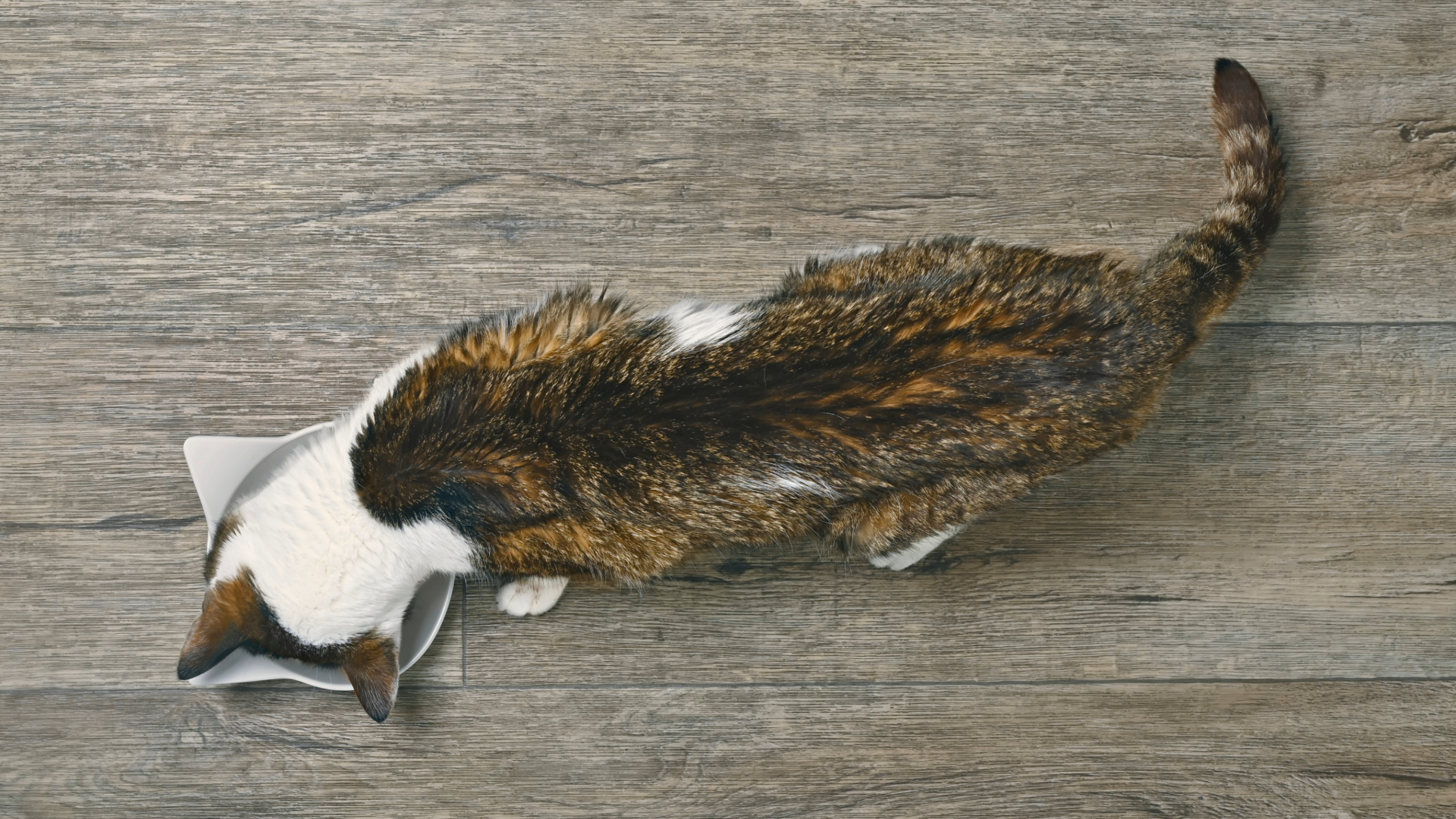
Ideal
Score | Visible signs |
|---|---|
5 | Their body is well-proportioned You can observe their waist behind their ribs You can feel the ribs have slight fat covering them They have minimal fat on the lower belly |
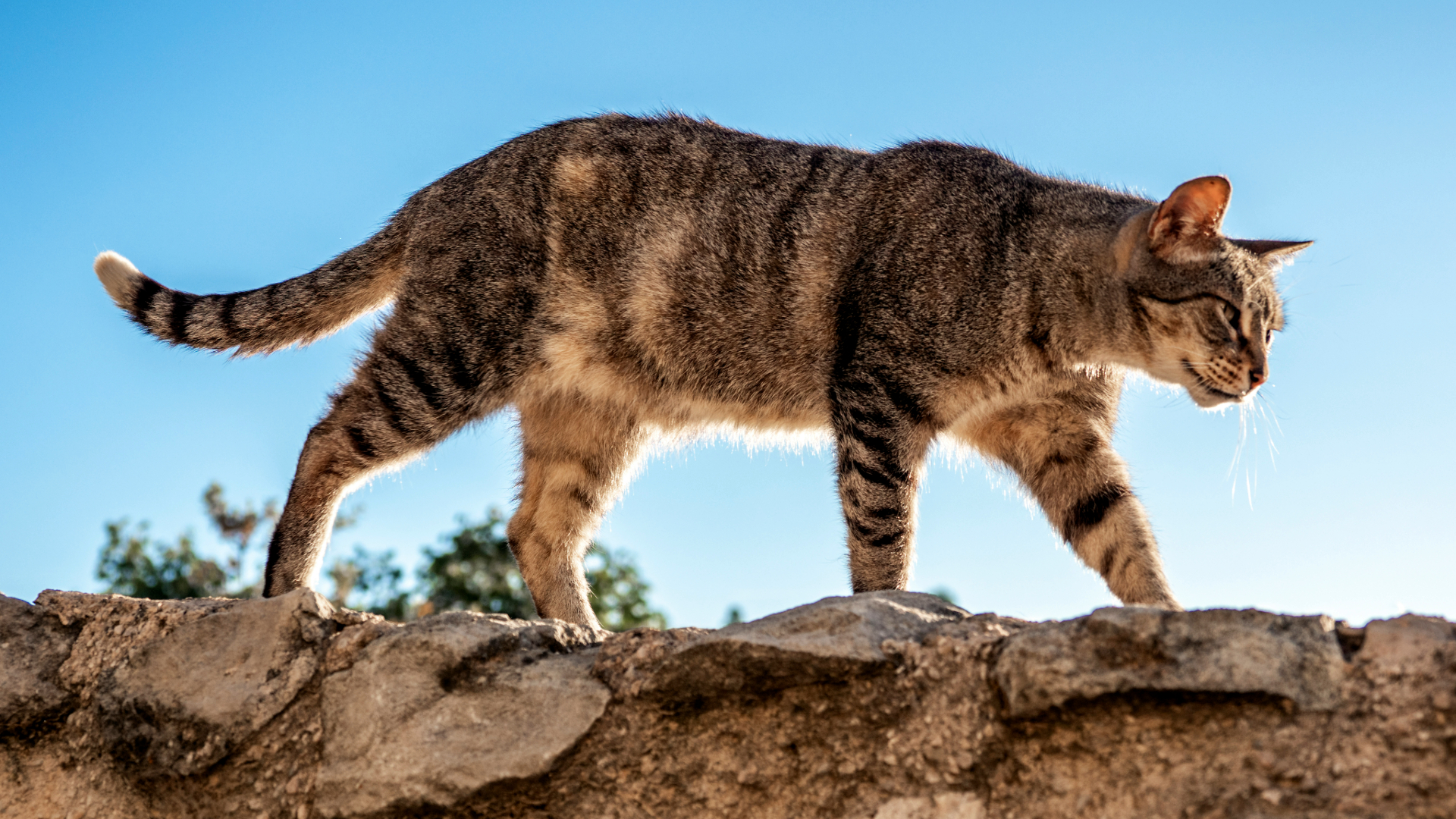
Over ideal
Score | Visible signs |
|---|---|
6 | You can feel their ribs with a slight excess of fat covering them You can distinguish their waist and lower belly fat, but it's not obvious No abdominal tuck |
7 | Moderate fat covers their ribs You can't easily feel their ribs It's hard to see their waist Their belly is noticeably round There's moderate fat on their lower belly |
8 | Excess fat covers their ribs You can't feel their ribs Their belly is noticeably round Their lower belly has prominent fat There is noticeable fat along the lower back, just in front of the hips and above the spine |
9 | Their ribs are covered with heavy fat You can't feel their ribs They have heavy fat along the lower back, just in front of the hips and above the spine They have heavy fat on the face and limbs You can't see their waist Their belly is noticeably enlarged Their belly has extensive fat deposits |
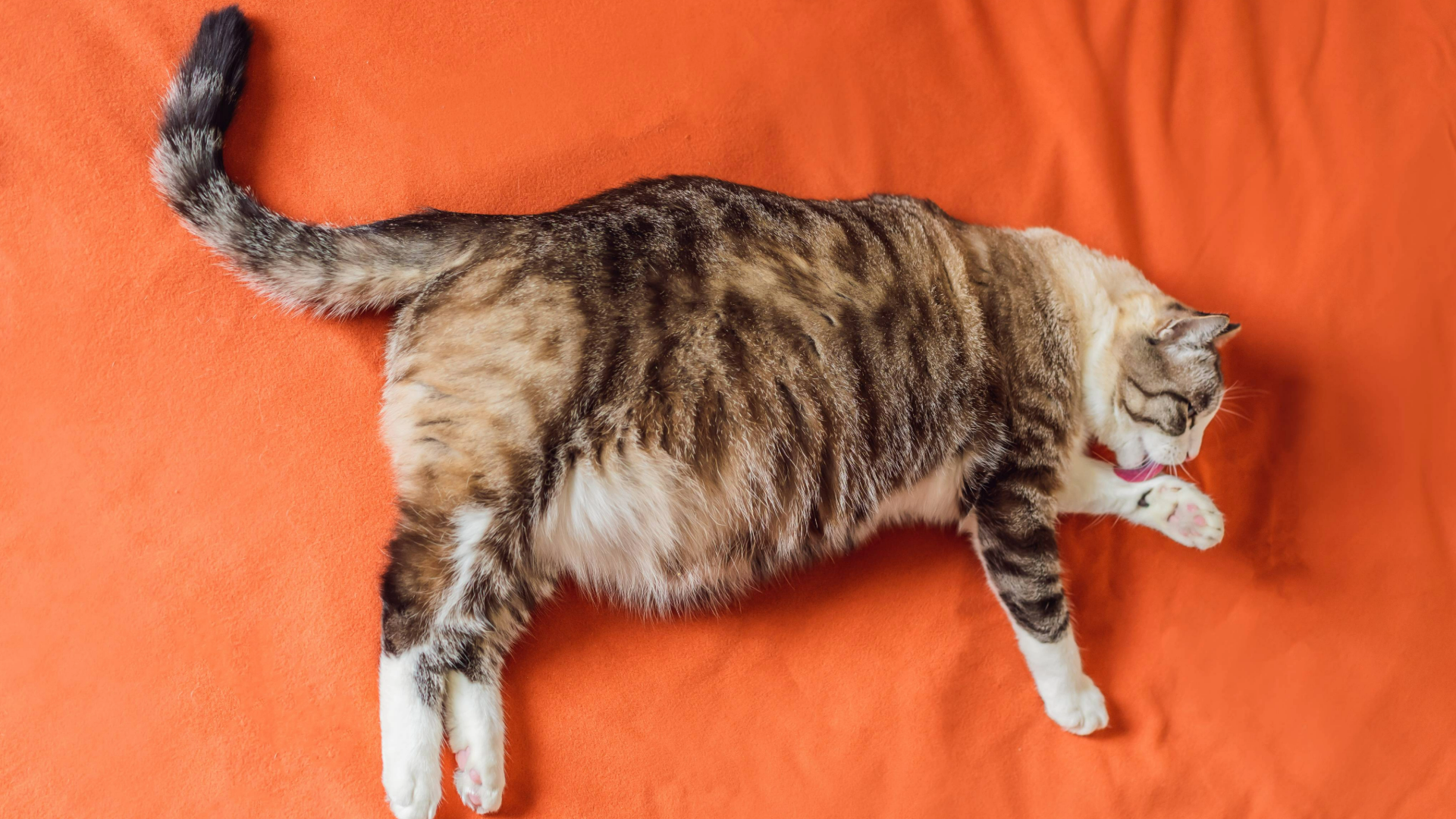
Dr. MacMillan adds, "Overweight and obese cats lose their natural body shape. Instead of having a clearly defined waist just behind their ribcage, an overweight cat will appear rounded. Try looking at your cat from above and the side to see if you can clearly identify an abdominal tuck or their waist.
"Obese cats will develop fatty deposits in their lower abdomen, sometimes referred to as ‘fat pads’. You will also struggle to feel the ribs easily in an overweight cat, and if they creep into obesity, it can be a struggle to feel their spine properly, too. In morbidly obese cats, their head almost appears too small for their body due to the amount of fat deposits in their abdomen, trunk, and limbs."
How do you treat obesity in cats?
If your cat is obese, they need to be treated through a carefully controlled weight loss program design for cats, according to Dr. MacMillan. This involves gradually reducing their calorie intake and introducing gentle activity and exercise into their routine.
She says: "It is important not to overdo things, as dramatically cutting a cat’s food could lead to undesirable begging or scavenging behavior, as well as putting your cat at risk from a dangerous condition called hepatic lipidosis (fatty liver disease).
"Slow, steady, and sustainable is key. Most veterinary practices run weight loss clinics to help guide owners through the changes they need to make. This will help give you and your cat manageable targets and advice on how to make weight loss a success."
If your cat is suffering from other health conditions, such as pain from arthritis, it can be a good idea to treat those at the same time to help them move more freely and encourage weight loss.
What is the life expectancy of an obese cat?
While a healthy cat’s lifespan can be up to 15 years, some obese cats may only live five to 10 years, and being overweight could reduce their lifespan by around two years.
Dr. MacMillan adds: "Obese cats are at greater risk of serious health issues such as diabetes mellitus, cancer, urinary disorders, and heart conditions. I also see many overweight and obese cats who are struggling with painful joints due to the abnormal pressure put on them."
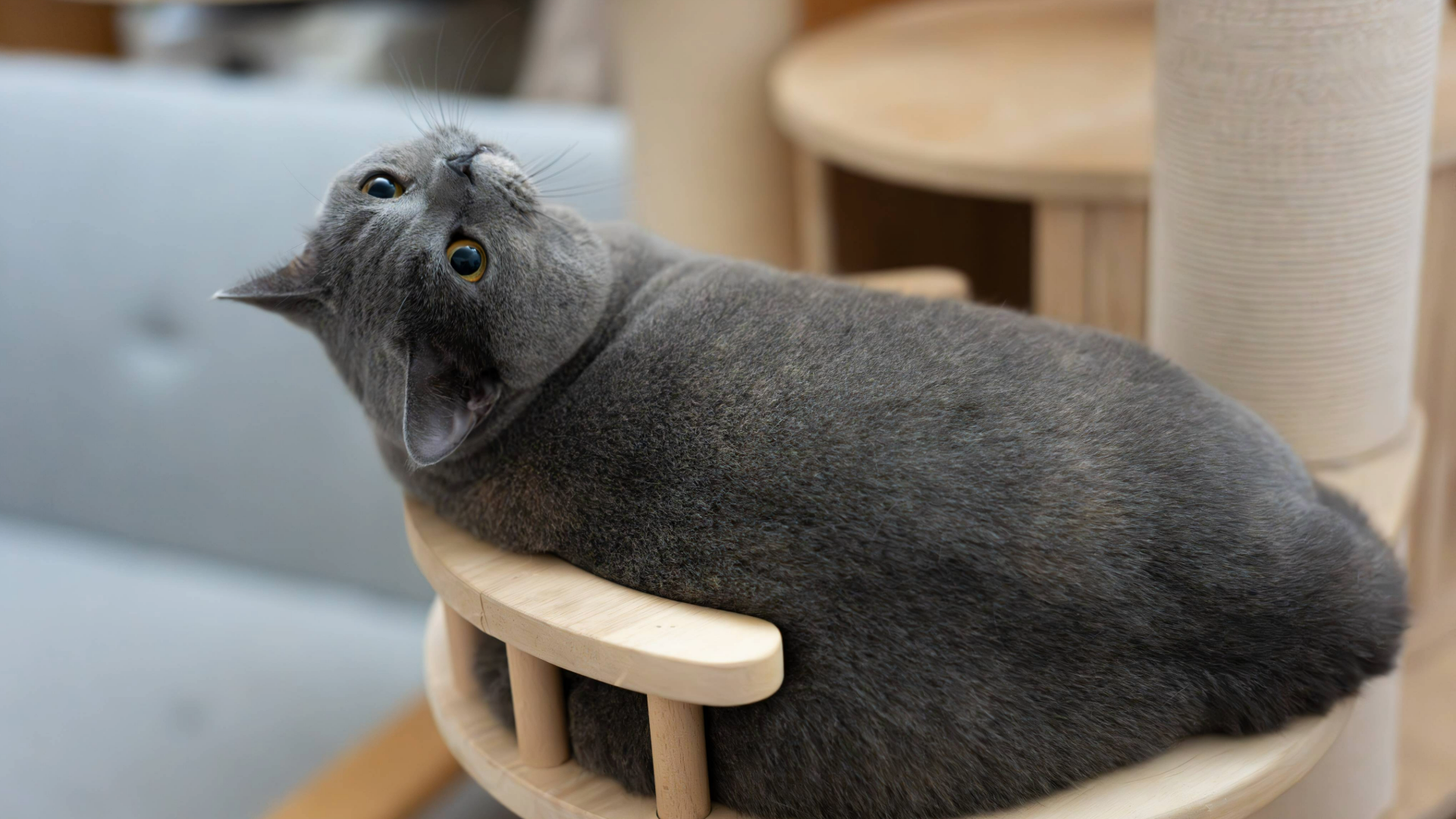
What causes obesity in cats?
The main cause of obesity in cats is an inappropriate diet that exceeds their daily calorie allowance. However, genetics, activity levels, and neuter status can contribute towards weight gain.
Dr. MacMillan says, "Weight gain is more likely in sedentary cats, not only because they are not exercising as much but also because boredom can drive them to eat more. This is why house cats are more likely to be overweight than outdoor cats."
How do you prevent obesity in cats?
1. Follow feeding guidelines
If you're unsure how much to feed your cat, take a look at their food manufacturer's guidelines, which will tell you the amount based on their ideal body weight.
2. Measure their food
Dr. MacMillan advises measuring your cat's food with kitchen scales, as opposed to by cups or a hand, which can be inaccurate: "Even minor variations could cause weight gain over time."
3. Stop topping up their food bowl
Since many cats are unable to self-regulate, avoid topping up their food bowl when it looks empty. Free feeding can lead to overeating and weight gain, which is why scheduled feeding can be a better choice.
4. Be cautious with treats and tidbits
Treats and tidbits might feel insignificant and small, but they all add up to their daily calorie allowance and can result in unwanted weight gain.
5. Encourage activity
To keep your cat physically and mentally healthy, ensure you're engaging in regular play sessions with the best interactive cat toys. Dr. MacMillan also advises using the best cat puzzle feeders to slow down their eating and get them to work for their food.
6. Vet check-ups
Dr. MacMillan says, "Regular check-ups with the vet will help to ensure your cat is maintaining a healthy body weight. They will weight your pet on the scales but also assess their body condition score, giving you some reassurance that they are doing OK."
Read next: How to improve your cat's diet and how to tell if your kitten is overweight

Rebecca is a veterinary surgeon who graduated in 2009 from the Royal Veterinary College in London. She has a wealth of experience in first opinion small animal practice, having done a mixture of day-to-day routine work, on-call emergency duties and managerial roles over the years. Rebecca enjoys medicine in particular and she is proud to have recently achieved a BSAVA postgraduate certificate in small animal medicine (with commendation).
Edited by Georgia Guerin and Alexis De Leaver.
Recent updates
This page was last updated in April 2025 by Megan Milstead.
PetsRadar Newsletter
Get the best advice, tips and top tech for your beloved Pets
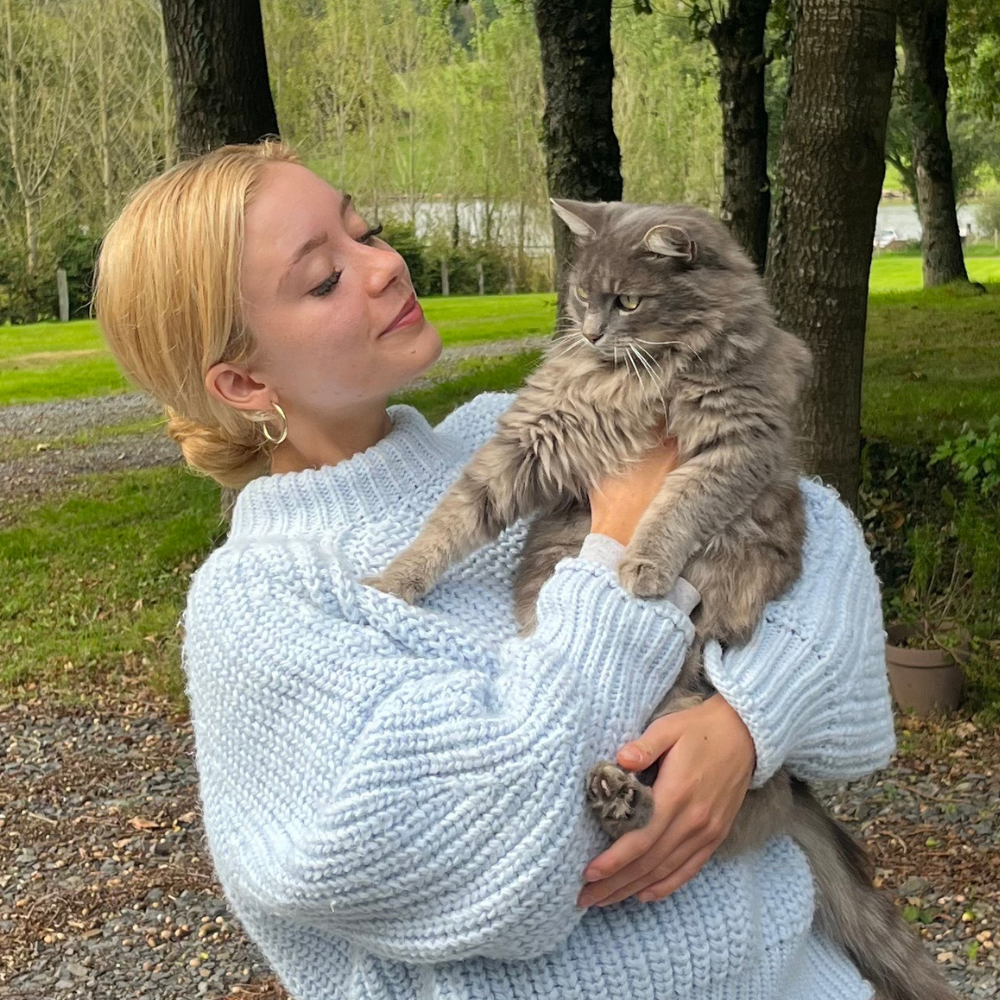
Megan is a Staff Writer at PetsRadar, covering features, reviews, deals, and buying guides. She has a wealth of experience caring for animals, having grown up with dogs, cats, horses, guinea pigs, and more throughout her life. She studied BA Journalism at the University of Westminster, where she specialized in lifestyle journalism and was editor of Smoke Radio’s lifestyle website. Megan works alongside qualified vets and accredited trainers to ensure you get the best advice possible. She is passionate about finding accurate and helpful answers to your pet-related questions.
